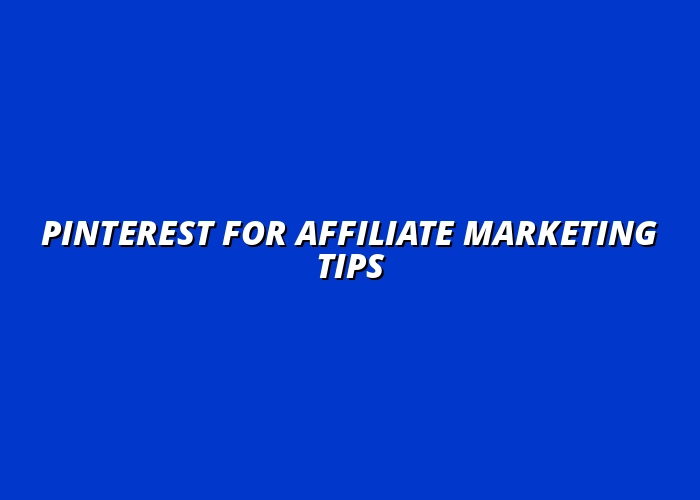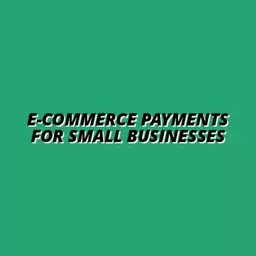Pinterest for Affiliate Marketing Tips

Posted on: 2025-09-28
By: Liam Corbin
As the digital landscape continues to evolve, platforms like Pinterest are becoming essential for affiliate marketers. With its unique combination of visual appeal and high intent users, Pinterest offers a distinct advantage in driving traffic and generating income. Are you ready to harness this powerful tool?
What You Will Learn
- Learn the fundamentals of Pinterest affiliate marketing and how to effectively promote products through engaging pins.
- Understand the importance of Pinterest's search engine capabilities and the longevity of pin content for sustained traffic.
- Discover how to identify and tailor your content to your target audience's demographics and interests on Pinterest.
- Utilize Pinterest Trends to gain insights into user behavior, seasonal interests, and effective content formats.
- Explore the benefits of switching to a Pinterest business account, including access to analytics and enhanced pin features.
- Understand the crucial legal and compliance considerations in affiliate marketing, including FTC guidelines for disclosures.
- Master the art of maintaining transparency and building trust with your audience to improve conversion rates.
- Implement actionable strategies for creating eye-catching pins, scheduling content, and engaging with your audience effectively.
Understanding Pinterest User Demographics
Statistics showcase the importance of understanding your audience on Pinterest to drive successful affiliate marketing.
Pinterest User Gender Distribution
Approximately 60% of Pinterest users are women, highlighting the platform's predominantly female audience.
Age Distribution
The primary age group on Pinterest is 18 to 49 years old, indicating a younger audience interested in visual content.
User Intent
Users come to Pinterest primarily with the intent to discover and purchase products.
Content Longevity
Pins can drive traffic for months compared to the short lifespan of posts on other social media platforms.
Understanding Pinterest for Affiliate Marketing Success
When it comes to affiliate marketing, Pinterest is an exciting platform that can unlock fantastic opportunities for you. It's a visual discovery tool where users search for ideas, inspiration, and products. As an entrepreneur at The Cash Automator, I've seen firsthand how effective Pinterest can be for generating traffic and income when used effectively!
Let's dive into what makes Pinterest a valuable ally in your affiliate marketing journey. By understanding its unique features and user demographics, you can craft strategies that resonate with your audience. This knowledge will empower you to make informed decisions that could lead to significant financial gains! For more insights on maximizing your affiliate efforts, check out our guide on optimizing your affiliate marketing strategy.
Defining Pinterest Affiliate Marketing
What It Is and How It Works
Pinterest affiliate marketing is all about promoting products through your pins and earning a commission when someone makes a purchase through your link. Here’s how it works: you create engaging pins featuring products, add your affiliate links, and share them on Pinterest. When users click on your pin and buy the product, you earn a commission!
This model blends creativity with strategy, allowing you to showcase products visually while guiding users through the purchasing process. It’s a win-win! You get to share products you love, and your audience discovers valuable ideas they can use in their lives.
The Importance of Pinterest in the Affiliate Marketing Space
Pinterest has unique benefits that set it apart from other social platforms. For starters, it is a search engine at its core, meaning people are actively looking for information and products. Here are several key reasons why Pinterest is essential for your affiliate marketing efforts:
- High Intent Users: Users come to Pinterest with the intent to discover and purchase.
- Longevity of Content: Pins can drive traffic for months, unlike posts on other social media platforms that have a short lifespan.
- Visual Appeal: The platform thrives on beautiful images, making it ideal for showcasing products effectively.
By tapping into Pinterest, you can create a sustainable stream of traffic and income that is less volatile than other platforms. This aligns perfectly with the mission of The Cash Automator, empowering you to build automated income streams! Learn more about building automated income streams.
Identifying Your Target Audience on Pinterest
Demographics and Interests: Tailoring Your Approach
Understanding your target audience is crucial for success on Pinterest. The platform attracts a diverse user base, but certain demographics dominate. For example, around 60% of Pinterest users are women, primarily aged between 18 and 49. Knowing this, you can tailor your content to appeal more effectively to your audience's interests!
To identify your audience, consider their interests, hobbies, and challenges. Think about what problems your products solve or how they enhance lives. This targeted approach will help you create pins that resonate and encourage engagement.
Utilizing Pinterest Trends for Audience Insights
Pinterest Trends is a powerful tool that allows you to explore what users are searching for and engage with. By analyzing trends, you can uncover popular topics and interests that align with your products. Here’s how you can use Pinterest Trends effectively:
- Search for Relevant Keywords: Discover what your audience is searching for related to your niche.
- Analyze Seasonal Trends: Identify peak interest times to time your posts for maximum visibility.
- Explore Content Formats: See what types of content resonate best with users, from videos to infographics.
At The Cash Automator, I always emphasize the importance of knowing your audience. By leveraging Pinterest Trends, you can tailor your content strategies to fit what your audience is actively looking for!
Utilizing a Pinterest Business Account
Benefits of Switching to a Business Account
If you're serious about affiliate marketing on Pinterest, it’s time to switch to a business account. This type of account offers unique features that enhance your marketing efforts. Here are some benefits:
- Access to Analytics: Track the performance of your pins and identify what works best.
- Rich Pins: Enhance your content with additional information directly from your website.
- Promoted Pins: Amplify your reach by paying to promote your best-performing pins.
By making this switch, you’re setting yourself up for success and gaining invaluable insights into your audience’s behavior—an essential component for effective affiliate marketing!
Setting Up Your Business Account for Success
Creating a Pinterest business account is straightforward. First, go to the Pinterest Business site and click on "Join as a Business." From there, follow these steps:
- Fill out your business details.
- Connect your website to claim it and enable Rich Pins.
- Add a profile picture and write an engaging bio to showcase your brand.
- Start creating boards and pins that reflect your niche.
With your business account set up, you’re ready to engage your audience and start your affiliate marketing journey with confidence! For more guidance on setting up effective campaigns, delve into promoting affiliate products effectively.
Quick Summary
Here's a brief recap of the key points discussed so far:
- Pinterest as a platform: A visual discovery tool that is effective for affiliate marketing.
- Understanding your audience: Tailoring your approach based on demographics and interests is crucial.
- Legal compliance: Adhering to FTC guidelines is essential for maintaining transparency and building trust.
Legal and Compliance Considerations in Affiliate Marketing
As you dive into the world of affiliate marketing on Pinterest, it’s vital to understand the legal aspects surrounding it. Compliance is not just a buzzword; it’s a necessity! By adhering to regulations, you not only protect yourself but also build trust with your audience. An essential starting point in this journey is the FTC guidelines, which outline how you should disclose affiliate relationships.
Understanding these guidelines helps maintain transparency, which is crucial for fostering trust. When your audience feels secure about the content you share, they are more likely to engage and click through your affiliate links. This level of honesty encourages a genuine relationship with your followers, which can lead to higher conversion rates.
Understanding FTC Guidelines for Affiliate Disclosures
Properly disclosing your affiliate links on Pinterest is not only ethical but also a requirement. The Federal Trade Commission (FTC) has specific rules about this, and it’s essential to be clear and upfront with your audience. Use straightforward language, such as “This post contains affiliate links, meaning I earn a small commission if you make a purchase.” This brief statement informs your audience and keeps you compliant.
Here’s a quick list of tips for effective disclosures:
- Place disclosures at the beginning of your pin descriptions.
- Use clear and uncomplicated language.
- Avoid hiding disclosures in lengthy paragraphs.
How to Properly Disclose Affiliate Links on Pinterest
To ensure you’re following the FTC guidelines, consider these practices:
- Include a disclaimer on your Pinterest profile and boards mentioning your affiliate relationships.
- Utilize hashtags like #affiliate or #ad in your pin descriptions.
- Regularly review your disclosures to ensure they remain compliant with evolving regulations.
By staying current with these practices, you’ll create a sense of reliability. Trust is key in affiliate marketing, and when your audience knows you are transparent, they are more likely to support your recommendations.
Maintaining Transparency and Trust with Your Audience
In the world of affiliate marketing, transparency is your best friend! When you openly share that you earn a commission from products, you reinforce your integrity as a content creator. This practice not only builds trust but can also enhance your credibility as an expert in your niche. Remember, it’s about creating a community where your audience feels valued and informed.
Here are a few additional ways to foster transparency:
- Share personal experiences with the products you promote.
- Be honest about any potential downsides of the products.
- Engage with your audience by responding to their questions about the products.
By incorporating these strategies, you’ll establish a strong foundation of trust that can significantly boost your affiliate marketing success. For further reading on building credibility, explore crafting engaging affiliate content.
Final Thoughts and Next Steps for Aspiring Affiliate Marketers
As you embark on your Pinterest affiliate marketing journey, remember that strategy is key! This platform offers a treasure trove of opportunities if approached with the right mindset and tools. From understanding your audience to mastering SEO, each step is crucial in paving the way for your success.
What’s next? Let’s break down some key strategies that will serve as your roadmap:
Summarizing Key Strategies for Effective Pinterest Marketing
Here are some actionable tips for getting started today:
- Define your niche and target audience based on their interests.
- Create quality, eye-catching pins that stand out.
- Regularly review your performance metrics and adjust your strategies accordingly.
By focusing on these areas, you’ll set yourself up for success! Remember, the journey is ongoing and requires continuous learning and adaptation.
Actionable Tips for Getting Started Today
Before you hit “publish” on those pins, take a moment to plan your strategy. Consider the following:
- Schedule a mix of promotional and educational content.
- Experiment with different pin designs to see what resonates with your audience.
- Engage with your audience by responding to their comments and questions.
The more you invest in understanding what works, the more success you’ll find in your affiliate marketing endeavors. So, what are you waiting for? Let’s get started!
Engaging Your Audience: FAQs and Common Concerns
As you build your affiliate marketing strategy, you may encounter questions or concerns. Here are some frequently asked questions that can help clear up any confusion:
Frequently Asked Questions (FAQs) About Pinterest Affiliate Marketing
- Q1: What types of products are best for Pinterest affiliate marketing?
- Products that are visually appealing and align with common Pinterest categories like home decor, fashion, DIY, recipes, beauty, and travel tend to perform well. Think about products that inspire or solve a problem visually.
- Q2: Do I need a website to do Pinterest affiliate marketing?
- While a website can enhance your strategy by providing a dedicated platform for content and capturing email leads, it's not strictly necessary. You can directly link to affiliate products from your pins, especially if you're promoting products on platforms like Amazon or Etsy. However, claiming your website on Pinterest (even a simple landing page) offers more features and analytics.
- Q3: How often should I post on Pinterest for affiliate marketing?
- Consistency is key. Many successful Pinterest marketers recommend pinning 5-10 times a day, though quality over quantity is essential. Use a scheduler to maintain a consistent presence without being constantly online.
- Q4: Can I use Pinterest for different niches simultaneously?
- Yes, you can. Pinterest allows you to create multiple boards, each dedicated to a specific niche or topic. This helps keep your content organized and ensures you're targeting relevant audiences for each product category. Just ensure your profile clearly communicates the breadth of your offerings.
- Q5: What are "Rich Pins" and why are they important?
- Rich Pins are enhanced pins that provide more context about an idea. There are different types, such as product Rich Pins (which show real-time pricing, availability, and where to buy), recipe Rich Pins, and article Rich Pins. Product Rich Pins are particularly important for affiliate marketers as they offer direct, up-to-date information, making it easier for users to make purchasing decisions.
- Q6: How do I ensure my affiliate links are compliant with FTC guidelines on Pinterest?
- Always disclose your affiliate relationship clearly and conspicuously. This means placing a disclosure like "#ad" or "#affiliate" at the very beginning of your pin description, and also on your profile and board descriptions where relevant. The disclosure should be easy to see and understand, not buried in text or hidden.
Addressing Common Questions about Pinterest Affiliate Marketing
Here are some common queries from new affiliate marketers:
- What types of products should I promote?
- How often should I post affiliate content?
- Can I use Pinterest for different niches?
Addressing these questions not only clarifies your path but also engages your audience. Make sure to provide valuable insights that encourage further interaction!
Encouraging Reader Feedback and Interaction
Your audience’s feedback is invaluable! Encourage them to share their thoughts and experiences with affiliate marketing on Pinterest. Ask questions, start discussions, and invite them to share what products they love. This interaction not only creates community but can also provide you with fresh ideas for your content. If you're interested in boosting your revenue, consider exploring strategies to boost revenue with affiliate funnels.
So, dive in, engage with your audience, and watch as your affiliate marketing efforts start to flourish. Remember, at The Cash Automator, we’re here to support your journey to financial independence! Let’s take these steps together and make your Pinterest marketing a success!
Recap of Key Points
Here’s a quick recap of the important points discussed in the article:
- Pinterest is a powerful tool for affiliate marketing, acting as a visual search engine where users seek inspiration and products.
- Target audience understanding is crucial; focus on demographics and interests to tailor your content effectively.
- Utilize Pinterest Trends to identify popular topics and keywords that align with your niche.
- Switch to a Pinterest business account for access to analytics, rich pins, and promoted pins, enhancing your marketing efforts.
- Follow FTC guidelines for disclosing affiliate links to maintain transparency and build trust with your audience.
- Engage with your audience by responding to feedback and sharing personal experiences to foster a genuine connection.
- Continuously evaluate and adapt your strategies based on performance metrics to optimize your affiliate marketing success.
 Creating a membership site can be your gateway to generating income effortlessly, allowing you to ea
Creating a membership site can be your gateway to generating income effortlessly, allowing you to ea
 As the e-commerce landscape evolves, small businesses must adapt to stay competitive. Did you know t
As the e-commerce landscape evolves, small businesses must adapt to stay competitive. Did you know t
 When it comes to affiliate marketing, leveraging the power of webinars can transform your approach.
When it comes to affiliate marketing, leveraging the power of webinars can transform your approach.